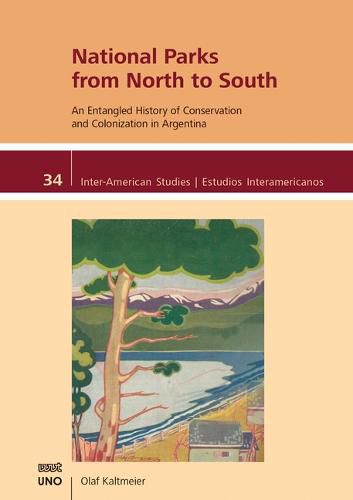Readings Newsletter
Become a Readings Member to make your shopping experience even easier.
Sign in or sign up for free!
You’re not far away from qualifying for FREE standard shipping within Australia
You’ve qualified for FREE standard shipping within Australia
The cart is loading…






The establishment of national parks in Argentina - the first ones in Latin America - takes place in a transnational space of entanglements where ideas, imaginaries, people, biota and artefacts circulate. Park concepts in Argentina are influenced by a wide range of different approaches from U.S.-American Park politics through French landscape architecture and Prussian sustainable forestry to international debates on nature conservation. While national parks are today regarded as hoards of wilderness, contemporary interpretation in the first half of the 20th century is quite more open. In Argentina, a position has prevailed that sees national parks as real instruments of colonization. Agricultural colonization and the expulsion of indigenous peoples, broad programs of urbanization and touristification of landscape as well as the massive processes of biological colonization by salmon, roe deer and Douglas fir are integral elements of Argentine Park politics. Especially in the emblematic National Parks of Nahuel Huapi and Iguazu. In this context between conservation and colonization, the book explores the following question: How do national parks operate?
$9.00 standard shipping within Australia
FREE standard shipping within Australia for orders over $100.00
Express & International shipping calculated at checkout
The establishment of national parks in Argentina - the first ones in Latin America - takes place in a transnational space of entanglements where ideas, imaginaries, people, biota and artefacts circulate. Park concepts in Argentina are influenced by a wide range of different approaches from U.S.-American Park politics through French landscape architecture and Prussian sustainable forestry to international debates on nature conservation. While national parks are today regarded as hoards of wilderness, contemporary interpretation in the first half of the 20th century is quite more open. In Argentina, a position has prevailed that sees national parks as real instruments of colonization. Agricultural colonization and the expulsion of indigenous peoples, broad programs of urbanization and touristification of landscape as well as the massive processes of biological colonization by salmon, roe deer and Douglas fir are integral elements of Argentine Park politics. Especially in the emblematic National Parks of Nahuel Huapi and Iguazu. In this context between conservation and colonization, the book explores the following question: How do national parks operate?